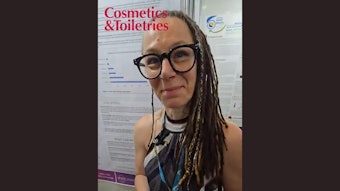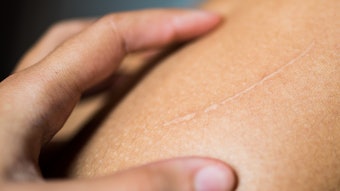
Over the past decade the need for improved UVA protection became apparent. UV radiation has adverse effects, including sunburn, photoaging and skin cancer. These effects can only be prevented by protecting against the whole range of UV radiation, including UVA.
On the other hand there is also a trend to limit the amount of “chemicals” on the skin. This means that very efficient UV absorbers should be available for the new requirement of broad UV protection. Bis-Ethylhexyloxyphenol methoxyphenyl triazinea (BEMT) has been designed to fulfill this requirement. It is photo-stable, oil-soluble, very efficient and covers the UVB and UVA range. Its physical and chemical properties are shown in Table 1. In the year 2000, European authorities added BEMT to the positive list of cosmetic UV absorbers.
Due to their molecular structure, hydroxyphenyltriazines (HPTs) exhibit a UV spectrum with two distinctive absorption bands. This is due to the presence of two electronic transitions with strong dipole moments, both of which are polarized perpendicular to each other.
In order to obtain broad-spectrum absorbance, OH and O-alkyl substituents have to be introduced at the three phenyl groups and positioned as shown in Figure 1.
• UVA: Two ortho-OH groups are required for efficient energy dissipation via intramolecular hydrogen bridges. In order to obtain strong absorption in the UVA, the para-positions of the two respective phenyl moieties should be substituted by O-alkyl, resulting in a bis-resorcinyl triazine chromophor.
• UVB: The remaining phenyl group attached to the triazine leads to UVB absorption. It can be demonstrated that maximal “full spectrum” performance is achieved with O-alkyl located in the para-position. Without solubilizing substituents, HPTs are nearly insoluble in cosmetic oils. They exhibit the typical properties of pigments (e.g., high melting points). In order to increase solubility in oil phases, the structure of the UV filter has been modified accordingly. The introduction of two 2-ethyl-hexyl groups as shown in Figure 1 results in the formation of BEMT, a new oilsoluble UV filter with true broad-spectrum performance.











